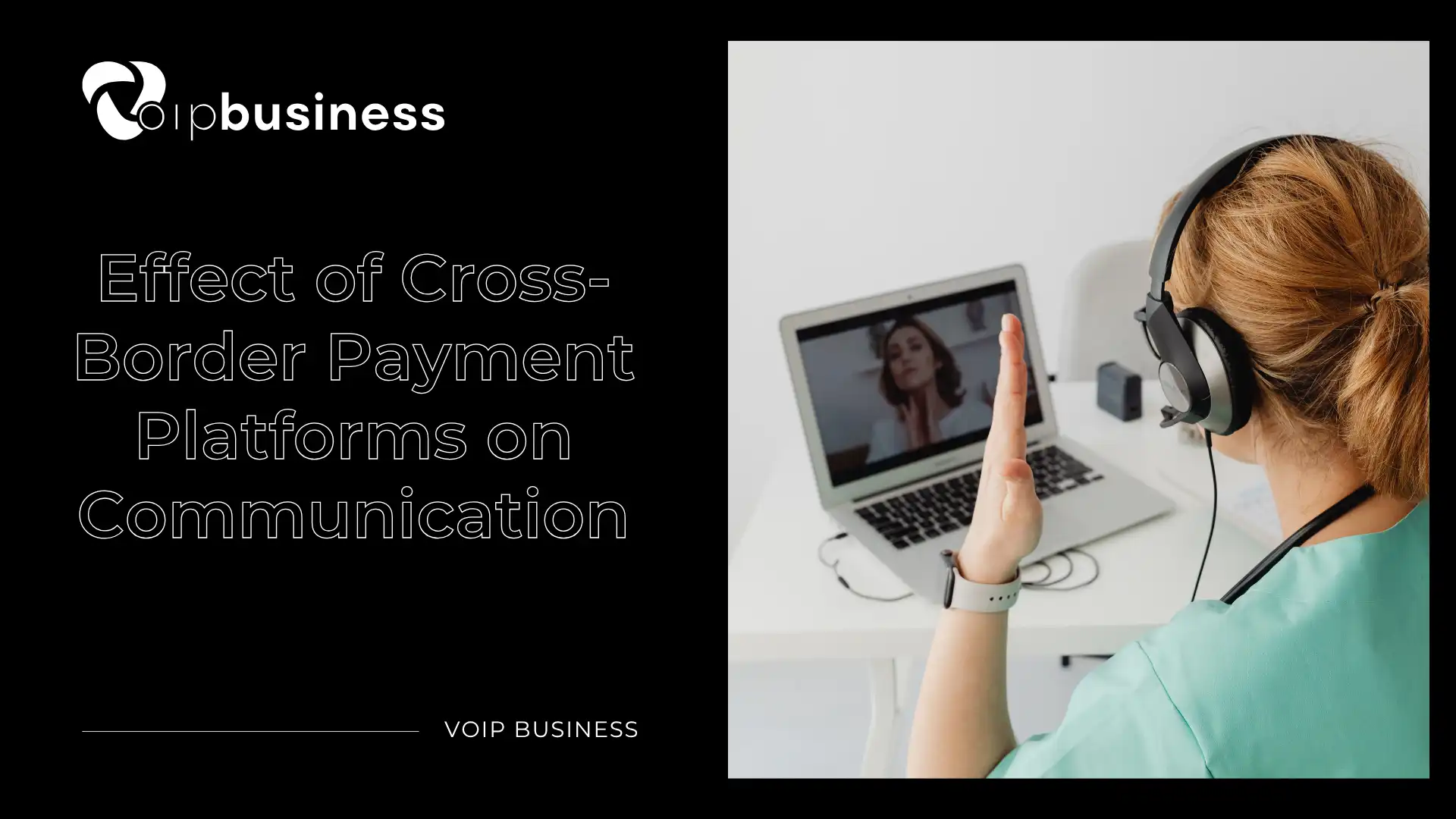In modern businesses, communication and finance are fully interrelated and interdependent. Companies today liaise with remote teams, cloud-based communications, and VoIP allowing them to work transcending continents.
Communication may be seamless, but that is only part of the picture. Businesses must also have effective and reliable ways to send and receive payments in every corner of the globe. This is where modern cross-border payment platforms help — financing remote communication and global collaborations.
Impact of Financial Connectivity on Global Communication
VoIP and remote work technology has made global hiring simpler than before. Video communication, messaging, and digital workspaces are milliseconds away. Paying international contractors and remote workers, however, is where the traditional system drags.
Without effective cross-border payment systems, infrastructure communication is useless. As an example, consider a multi-timezone call center or SaaS company with VoIP support teams in five countries. Operational communication must be met with operational payment processing.
This quote relates to how much time and money can be saved by integrating a seamless payment system into a company that pays contractors as well as clients internationally and funds an easily accessible payment tool.
Limitations of Legacy Systems
Any company that has foreign clients and contractors or pays foreign contractors and clients can greatly benefit from an easy integrated payment system.
Legacy banking systems such as SWIFT were never designed for the pace of modern, digital communication. They rely on multiple intermediaries, slow settlement times, and opaque processes that hinder business agility.
Biggest Challenges Include:
- Slow settlements — International payments often take 3–5 business days, even between major markets.
- High fees — Every intermediary bank adds its own fee, reducing the value of each transaction.
- Poor transparency — Businesses have limited visibility into where their money is or how much will arrive.
- Accessibility issues — Small or remote teams often lack access to international banking networks.
For companies running VoIP-based operations, where clients and contractors may be spread worldwide, these limitations can severely impact efficiency and trust.
Fintech and VoIP: Powering the Future of Remote Collaboration
The convergence of an increasingly mobile workforce and digital payment solutions is a stark characteristic of the modern economy. Fintech solutions facilitate the payment processing while VoIP and cloud technologies enable seamless workflows across the globe.
These are the remarkable features of a remote collaboration payment platform: multi-currency accounts that support payment and receipt in local currencies, Transparent foreign exchange rates, Instant transfers or same-day transfers, integrations with a range of CRM and communication tools, and Compliance with global payment regulations.
With communication systems and financial technologies working in synergy, seamless collaboration can be achieved across borders. Teams can work and get paid without borders.
Benefits of Combining Fintech and Communication Systems
Integrating financial and communication technologies brings several business advantages:
- Faster team payments – Contractors and employees get paid instantly, no matter where they are.
- Lower operational costs – Businesses save on transaction fees, exchange rates, and admin time.
- Stronger remote culture – Reliable payroll builds trust between distributed teams.
- Scalability – As companies expand internationally, fintech platforms grow with them.
- Efficiency – Automated payments and compliance reduce manual workload for HR and finance teams.
In other words, the same way VoIP made global communication instantaneous, cross-border payment platforms make global payroll and transactions equally fast and effortless.
Use Cases: How Communication-Driven Industries Leverage Cross-Border Payments?
Industries demonstrate how the integration of financial systems with communication systems works.
VoIP service providers – Payments for overseas resellers, partners, and technical staff are made seamless.
Remote-first tech companies – Fintech platforms facilitate payroll management for global employees.
Freelance marketplace – Contractors and creators around the globe are paid instantly.
Customer support, BPO – Global support staff are paid instantaneously.
Online education, Digital media – Payments are made to tutors and creators in real time and converted to local currencies.
Fintech payments are made real and communication technology connects people.
Global Communication and Finance: Future Trends
The evolution of communication and finance systems convergence includes digital collaboration and seamless payments.
What’s in the future?
- Globally, regulated blockchain systems and stablecoins facilitate instant payroll and vendor payment settlements.
- Payments that are embedded in CRMs and VoIP systems facilitate embedded finance systems.
- AI systems will manage compliance to reduce human error in verification processes.
- Remote work requires smart contracts to facilitate automatic release of payments.
- Decentralized payment systems will reduce transaction costs and enhance transaction accessibility.
As these technologies continue to develop, the distinction between “communication tools” and “financial systems” will become increasingly blurred, leading to a cohesive global framework for commerce.
Final Words
Communication connects teams. Payments sustain them. In a world where remote work and VoIP communication define business operations, the role of fintech — and especially the cross-border payment platform — is becoming fundamental.
By bridging financial and communication ecosystems, these platforms eliminate delays, lower costs, and make it possible for distributed teams to thrive. Together, fintech and VoIP are building a new kind of digital economy — one where collaboration and compensation happen as seamlessly as a phone call.
FAQs About Cross-Border Payment Platforms
1. What is a cross-border payment platform?
It’s a fintech system that allows businesses to send and receive international payments quickly, securely, and cost-effectively — essential for companies operating with global teams.
2. How does it relate to VoIP and communication?
Remote teams that rely on VoIP tools also need efficient ways to pay and get paid. Cross-border platforms handle the financial side of global collaboration.
3. Are these platforms secure?
Yes. Licensed providers use encryption, multi-layer verification, and comply with AML/KYC regulations to ensure financial safety.
4. Can small businesses use them?
Absolutely. SMEs benefit from faster transactions, better FX rates, and easier management of international payroll and invoices.
5. Do these systems support blockchain or stablecoins?
Many modern platforms integrate blockchain technology for faster, cheaper global transfers and support stablecoins for instant settlement.
6. What industries benefit most?
VoIP providers, remote-first companies, global agencies, BPOs, SaaS platforms, and any business operating across borders.
Read More : How to Call Canada from the US? Fast & Easy Guide


